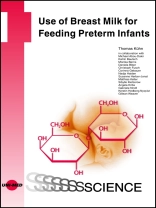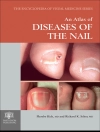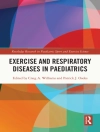The survival chances of preterm infants have improved considerably in the last few decades. The advantages of giving breast milk to neonates and infants for a sufficiently long period using this as the sole feeding method as far as possible have been sufficiently demonstrated. At least for preterm infants, breast milk is additionally an urgent medical and thus simultaneously a therapeutic intervention: it significantly reduces the typical morbidity of these children, increases the survival rate and improves long-termoutcomes.
This book aims to summarise theoretical principles of breastfeeding in preterminfants and neonates and their practical implementation in the difficult everyday setting of a neonatology unit. But it also attempts to define the context and framework conditions in which it is possible to also feed very small preterminfants using their mother’s milk as exclusively as possible and for a sufficiently long time, specifically through breast-feeding.
International authors from very different professions convey their expertise to give the very smallest babies the best chances for their long-termdevelopment and moreover to provide food for thought about moving away from traditional strategies of feeding and behaviour.
Cuprins
1. Introduction (Th. Kühn) 13
2. Breastfeeding of preterm and term infants: the German guidelines of the
National Breastfeeding Commission (M. Abou-Dakn) 15
3. Physiological basis of milk production and composition of human breast
milk (N. Haiden) 17
3.1. Physiological processes in milk production 17
3.1.1. Lactogenesis I 17
3.1.2. Lactogenesis II 17
3.1.3. Galactopoiesis 17
3.2. Composition of breast milk 19
3.2.1. Change in composition during lactation 19
3.2.2. Change in composition during the breast feed 19
3.2.3. The individual ingredients and their function 19
3.2.4. Bioactive factors – the microbiome of breast milk 21
3.2.5. Breast milk of the mother of a preterm infant 22
4. Breastfeeding and nutrition through breast milk as health prevention:
long-term effects (A. Kribs) 24
4.1. Occurrence of infections 24
4.2. Disorders related to metabolic syndrome 25
4.3. Neurological development 26
5. Growth and thriving of preterm infants while receiving breast milk
(Th. Kühn) 29
5.1. Importance of adequate growth 29
5.2. Feeding interventions in preterm infants 32
5.2.1. How should preterm infants grow postnatally and how do they grow in reality? 32
5.2.2. Which parameters are suitable for assessing optimal postnatal growth? 35
5.2.3. Which growth curves should be recommended? 36
5.2.4. What influences premature growth? 36
5.2.5. Catch-up growth after preterm birth 39
5.2.6. Early growth and long-term consequences 39
5.2.7. Nutrient requirement and composition in the feeding of preterm infants 40
5.2.8. Introduction of oral feeding 40
5.3. Growth of preterm infants being fed with breast milk 42
5.3.1. The influence of exclusive feeding with breast milk and especially breastfeeding of preterm
infants at the time of discharge on subsequent growth and neurological outcome 43
5.3.2. Nutrition of preterm infants after discharge 44
6. Fortification of breast milk and target fortification (Ch. Fusch) 49
6.1. Preterm infants have higher growth rates than term infants, raw breast milk cannot cover their
requirement 49
6.2. How can the nutrient requirements of preterm infants actually be covered? 49
6.2.1. Standard fortification of breast milk 49
6.2.2. Disadvantages of standard fortification 50
6.2.2.1. ELBW preterm infants 50
6.2.2.2. Donor milk 50
6.2.2.3. VLBW preterm infants and variability of breast milk composition 50
6.2.3. Breast milk does not have a constant composition, but shows intraindividual and
interindividual fluctuations 51
6.2.4. Adjustable fortification of breast milk 52
6.2.5. Target fortification 53
6.2.6. How can the content of breast milk be measured in practice? 54
6.3. Which products are available for fortification of breast and donor milk? 54
6.4. Fortifiers based on breast milk (H2MF, Human Milk Fortifier) 54
6.5. Time of fortification 55
6.6. General disadvantages of fortification 55
7. Early breastfeeding competence in preterm infants (K. Hedberg Nyqvist) 58
7.1. Criteria for introduction of breastfeeding – no suck assessment or training 58
7.2. Early nutritive sucking capacity verified by structured breastfeeding observations 58
7.3. Breastfeeding observations confirmed early sucking competence in preterm infants 60
7.4. Non-nutritive sucking opportunities 61
7.5. Practical breastfeeding support 61
7.6. Breastfeeding positions 63
7.7. Feeding routines that support early breastfeeding competence in preterm infants 63
7.8. The Baby-Friendly Hospital Initiative adapted for neonatal intensive care 64
8. Drinking pattern of preterm infants and dealing with bottle-feeding
(D. Biber) 65
8.1. Non-nutritive sucking and first experiences with milk 66
8.2. First attempts at drinking with the bottle 66
8.3. Quality instead of quantity 67
8.4. Stress reactions when feeding 68
8.5. Supportive measures during bottle feeding 68
8.6. Feeding means communication and bonding between mother and child 70
9. The practice of breastfeeding in preterm infants (G. Nindl) 72
9.1. Bonding shortly after birth 72
9.2. Kangaroo Mother Care / skin-to-skin contact 72
9.3. Obtaining breast milk and establishing lactation 73
9.4. Supportive environment 74
9.5. First attempts at putting the baby on the breast 75
9.6. Guiding to the breast 75
9.7. Non-nutritive sucking at the breast 76
9.8. Feeding by gastric tube at the breast 76
9.9. Positions to support breastfeeding 77
9.10. Milk transfer and nutritive sucking 78
9.11. Weighing and checking weight 79
9.12. Breastfeeding and additional tube-feeding 79
9.13. Observing and reflecting 79
9.14. Breastfeeding and supplementary feeding 80
9.15. Management at discharge 81
9.16. Breastfeeding of late preterm babies 82
9.17. General conditions to facilitate bonding and breastfeeding 83
10. Evidence-based recommendations on breastfeeding for neonatology
(M. Berns) 86
10.1. Importance of breast milk for preterm infants 86
10.2. Skin-to-skin contact – bonding – Kangaroo Mother Care 86
10.3. Obtaining milk 87
10.4. Learning to suck 87
10.5. Non-nutritive sucking 87
10.6. Actually breastfeed! 88
11. Breastfeeding and promoting breastfeeding as a process: the case for
clinical care pathways (M. Keller) 90
11.1. Problem of interfaces 90
11.2. Clinical care pathways 91
11.3. Promotion of breastfeeding as a treatment process based on the example of the family-centred
Neo PAss® care pathway 94
12. Donor breast milk and breast milk banks (C. Gebauer) 96
12.1. Historical development 96
12.2. Current situation 97
13. Structure and organisation of a breast milk bank for extremely immature
preterm infants on the ICU (S. Herber-Jonat) 101
13.1. Approval conditions, infrastructure and costs 101
13.2. Provision of breast milk at Großhadern Perinatal Centre 102
14. Milky Ways – Milk banks: Local challenges and global solutions
(G. Weaver) 107
15. Management of breast milk: practical details for everyday work on the NICU
(S. Kietzerow, Th. Kühn) 110
15.1. Prerequisites for lactation after premature birth 110
15.2. Breastfeeding aids for mothers of preterm infants (63) 112
15.3. Recommendations on storage of breast milk on the NICU 114
15.4. Breastfeeding room versus pumping next to the child 115
15.5. Dealing with micro-organisms and the pasteurisation of breast milk 117
15.5.1. Viral infections 117
15.5.2. Bacterial infections 120
15.5.3. Pasteurisation 120
15.5.4. Freezing followed by thawing 120
16. Promoting breastfeeding and counselling for mothers of preterm infants
in outpatient practice (K. Bautsch) 123
17. List of abbreviations 126
Index 127












